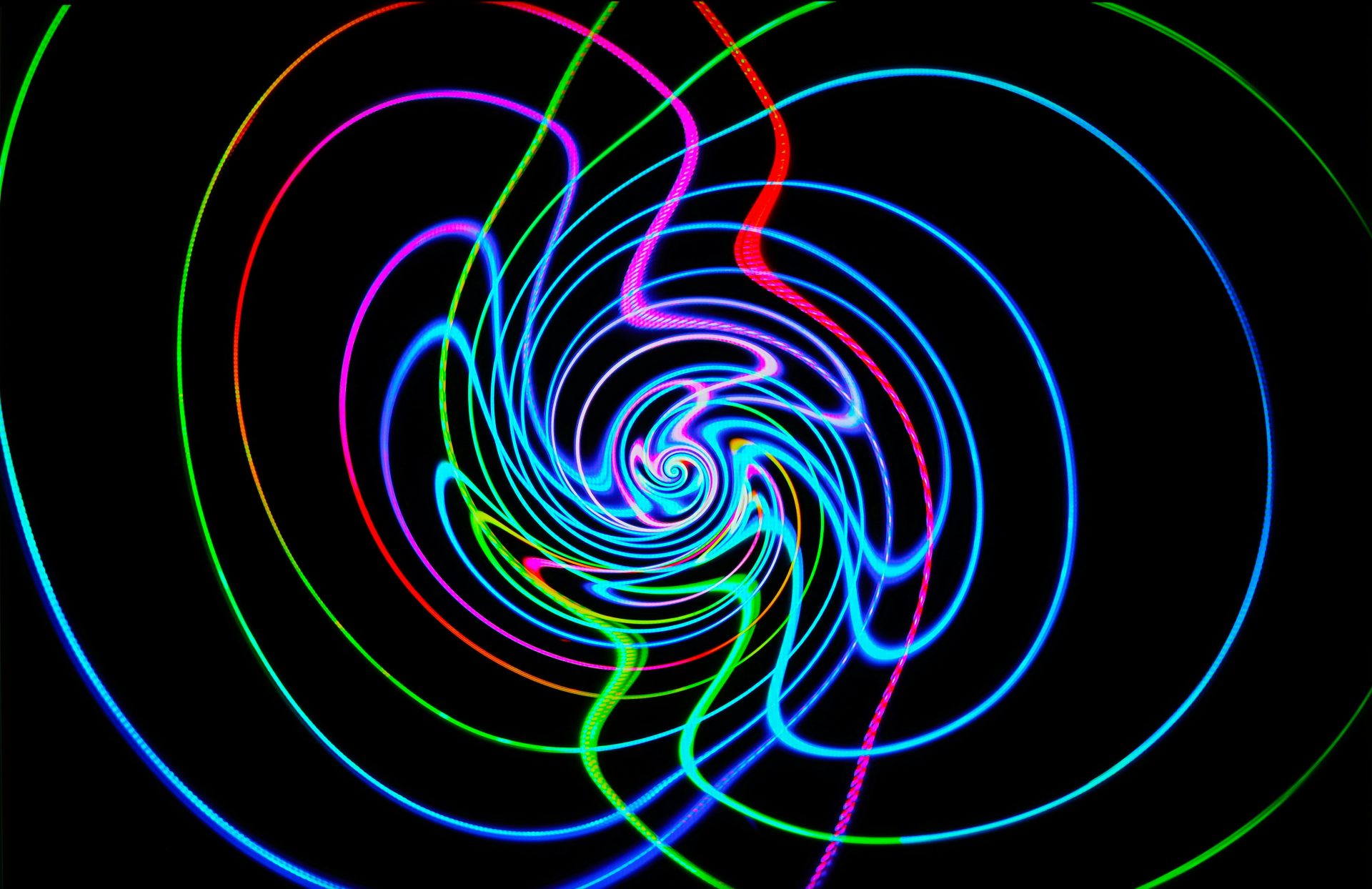Existence in Parallel Worlds

Before diving in, please note: This post is for informational purposes only. If you’d like to know more about how we approach topics, feel free to check out our friendly Disclaimer Page.
Hey there, amazing readers! 🖐️ Just a quick note: yes, we know there are a lot of ads here. Trust us, we get it—it’s not the prettiest look, but they help us keep this blog alive and kicking. Those pesky little ads cover the costs of all the behind-the-scenes magic, from hosting and tech stuff to creating content we hope you’ll love.
We’re committed to delivering quality posts, and your support (even just sticking around despite the ads) means everything to us. So, bear with us, and thanks for helping us keep the good vibes rolling. Now, on to the fun stuff! 😉
TRANSLATE BUTTON AT THE END OF THE ARTICLE
Exploring the Concept of Parallel Worlds
The concept of parallel worlds, also known as parallel universes or alternate realities, has fascinated scientists, philosophers, and storytellers throughout history.
The idea suggests that there are multiple versions of our universe existing simultaneously, each with its unique set of laws of physics, dimensions, and possibilities.
These parallel worlds could be similar to our own but with slight variations, or they could be vastly different, showcasing worlds where the laws of physics operate in entirely new ways.
Exploring the concept of parallel worlds opens up a realm of infinite possibilities and challenges our understanding of reality.
It forces us to question the nature of existence, the boundaries of the universe, and our place within it.
While the idea of parallel worlds may seem like a far-fetched science fiction concept, many scientists and theorists believe that there is compelling evidence to support the existence of these alternate realities.
Theoretical Basis of Parallel Universes
Theoretical physics, particularly quantum mechanics and cosmology, provides the basis for the existence of parallel universes.
In quantum mechanics, the many-worlds interpretation suggests that every possible outcome of a quantum event actually occurs in a separate universe.
This interpretation posits that all possible alternate histories and futures are real, each representing an actual world.
Cosmological theories like inflation and string theory also propose the existence of parallel universes.
Inflationary cosmology suggests that our universe is just one of many "bubbles" in a multiverse, each with its own laws of physics.
String theory, on the other hand, suggests that there could be multiple dimensions beyond the four we are familiar with, leading to the existence of parallel universes.
Evidence Supporting Existence of Parallel Realities
While direct empirical evidence for parallel universes remains elusive, there are several phenomena and experimental results that support the idea.
One such phenomenon is quantum entanglement, where particles become interconnected regardless of the distance between them.
This suggests a connection that transcends our classical understanding of space and time, potentially hinting at the existence of parallel realities.
Another piece of evidence comes from the cosmic microwave background radiation, which shows anomalies that some scientists believe could be signatures of collisions between our universe and other parallel universes.
These anomalies could be remnants of interactions between different realities, providing indirect evidence for the existence of parallel worlds.
Quantum Mechanics and Parallel Dimensions
Quantum mechanics, the branch of physics that deals with the behavior of particles on the smallest scales, plays a crucial role in the concept of parallel dimensions.
According to quantum mechanics, particles can exist in multiple states simultaneously until they are observed, at which point they "collapse" into a single state.
This superposition of states could imply the existence of parallel dimensions where each possible outcome of a particle’s state is realized.
In quantum mechanics, the concept of superposition allows for the existence of parallel dimensions where different versions of reality coexist.
This idea challenges our traditional understanding of linear time and suggests that every decision we make could potentially create a new parallel universe where a different choice was made.
Multiverse Theory: A Closer Look
The multiverse theory is a broader concept that encompasses the idea of parallel universes.
It suggests that our universe is just one of many universes that exist simultaneously, each with its own set of physical laws and constants.
The multiverse theory includes the concept of parallel worlds but also extends to the idea of a vast and diverse multiverse containing an infinite number of universes.
Within the multiverse theory, there are different types of multiverses, such as the level I multiverse, which consists of universes with different initial conditions, and the level II multiverse, which includes universes with different physical constants.
These multiverse models provide a framework for understanding the existence of parallel realities and the diversity of the cosmos.
Parallel Worlds in Science Fiction
The concept of parallel worlds has long been a popular theme in science fiction literature, film, and television.
Countless stories explore the idea of alternate realities where characters encounter different versions of themselves, navigate parallel dimensions, or travel between worlds.
Science fiction writers use parallel worlds as a narrative device to explore themes of identity, choice, and the nature of reality.
From classic works like H.G.
Wells’ "The Time Machine" to contemporary TV shows like "Stranger Things," parallel worlds have captured the imagination of audiences worldwide.
These fictional portrayals often blur the lines between science and fantasy, pushing the boundaries of what is possible and challenging viewers to consider the implications of parallel realities.
Interactions Between Parallel Universes
One intriguing aspect of parallel universes is the potential for interactions between different realities.
Some theories suggest that these interactions could occur through quantum entanglement, wormholes, or other phenomena that transcend classical spacetime.
If parallel universes exist, there may be ways for information, energy, or even beings to move between these worlds.
The idea of interactions between parallel universes raises fascinating questions about the nature of reality and the limits of our understanding.
Could there be parallel versions of ourselves living different lives in alternate realities?
Could we someday communicate with or even visit these parallel worlds?
Exploring the possibilities of interactions between parallel universes opens up a realm of speculation and wonder.
Philosophical Implications of Parallel Realities
The existence of parallel worlds has profound philosophical implications that challenge our understanding of identity, free will, and the nature of reality.
If there are infinite versions of ourselves in parallel universes, what does that mean for our sense of self and individuality?
Do we have free will, or are our choices predetermined by the existence of multiple realities?
Philosophers have long grappled with questions of determinism, causality, and the existence of multiple universes.
The concept of parallel realities forces us to confront the idea that our perception of reality may be limited and that there may be truths beyond what we can observe.
Exploring the philosophical implications of parallel realities invites us to question our assumptions about the nature of existence and the interconnectedness of all things.
Are Parallel Worlds Real or Just Speculation?
The question of whether parallel worlds are real or merely speculative remains a topic of debate among scientists, philosophers, and theorists.
While there is compelling theoretical and mathematical evidence to support the existence of parallel universes, direct empirical proof is still lacking.
The nature of parallel worlds makes them difficult to detect or observe using current scientific methods, leaving their existence open to interpretation.
Some scientists argue that the existence of parallel worlds is a logical consequence of certain theories, such as quantum mechanics and string theory.
Others contend that the concept of parallel realities is purely speculative and falls outside the realm of empirical science.
Until concrete evidence is found to confirm the existence of parallel universes, the question of their reality will remain an intriguing mystery.
Parallel Worlds vs Alternate Realities
The terms "parallel worlds" and "alternate realities" are often used interchangeably, but they can have slightly different connotations.
Parallel worlds typically refer to universes that exist alongside our own, with potentially different physical laws or dimensions.
These worlds may be similar to our own or vastly different, offering a wide range of possibilities.
On the other hand, alternate realities often imply variations or divergences from our own world due to different choices, events, or outcomes.
Alternate realities can stem from decisions made in the past or potential futures that have not yet occurred.
While parallel worlds and alternate realities share similarities, they represent distinct concepts within the broader framework of multiverse theory.
Practical Applications of Parallel Universe Theory
While the concept of parallel universes may seem like a purely theoretical or philosophical idea, it has potential practical applications in various fields.
In quantum computing, for example, the principles of quantum mechanics that underpin the existence of parallel dimensions are being harnessed to create powerful computing systems.
Quantum algorithms can leverage the concept of superposition to perform complex calculations more efficiently than classical computers.
Parallel universe theory also has implications for the fields of cosmology, artificial intelligence, and even psychology.
By exploring the nature of parallel realities, researchers can gain new insights into the structure of the universe, the possibilities of artificial intelligence, and the complexities of human consciousness.
While these applications are still in the early stages, the concept of parallel universes offers a wealth of potential for advancing scientific knowledge and technological innovation.
The Search for Proof of Parallel Existence
The search for proof of parallel existence continues to be a focus of scientific research and inquiry.
Scientists are exploring new ways to detect and observe potential parallel universes through experiments in quantum physics, astrophysics, and particle physics.
From studying cosmic microwave background radiation to conducting high-energy particle collisions, researchers are pushing the boundaries of our understanding of the universe to seek evidence of parallel realities.
While the quest for proof of parallel existence may be challenging, it is an essential endeavor that could revolutionize our understanding of the cosmos.
By unraveling the mysteries of parallel worlds, scientists hope to unlock new possibilities for space exploration, technology development, and philosophical inquiry.
The search for proof of parallel existence represents a frontier of scientific exploration that holds the potential to reshape our conception of reality itself.
Conclusion
In conclusion, the concept of parallel worlds offers a fascinating lens through which to explore the nature of reality, the universe, and our place within it.
While the existence of parallel universes remains a subject of debate and speculation, the theoretical basis, evidence, and implications surrounding parallel realities are rich and diverse.
From quantum mechanics to multiverse theory, from science fiction to practical applications, the concept of parallel worlds captivates our imagination and challenges our understanding of the cosmos.
As we navigate the complexities of parallel universe theory, we are reminded of the boundless possibilities that exist beyond the confines of our known reality.
Whether parallel worlds are real or purely theoretical, the exploration of this concept pushes the boundaries of science, philosophy, and human curiosity.
In the quest to unveil the secrets of parallel existence, we embark on a journey of discovery that transcends the limits of our ever-evolving understanding of the universe.

The Enlightenment Journey is a remarkable collection of writings authored by a distinguished group of experts in the fields of spirituality, new age, and esoteric knowledge.
This anthology features a diverse assembly of well-experienced authors who bring their profound insights and credible perspectives to the forefront.
Each contributor possesses a wealth of knowledge and wisdom, making them authorities in their respective domains.
Together, they offer readers a transformative journey into the realms of spiritual growth, self-discovery, and esoteric enlightenment.
The Enlightenment Journey is a testament to the collective expertise of these luminaries, providing readers with a rich tapestry of ideas and information to illuminate their spiritual path.
Our Diverse Expertise 🌟
While our primary focus is on spirituality and esotericism, we are equally passionate about exploring a wide range of other topics and niches 🌍📚. Our experienced team is dedicated to delivering high-quality, informative content across various subjects ✨.
To ensure we provide the most accurate and valuable insights, we collaborate with trusted experts in their respective domains 🧑🏫👩🏫. This allows us to offer well-rounded perspectives and knowledge to our readers.
Our blog originally focused on spirituality and metaphysics, but we’ve since expanded to cover a wide range of niches. Don’t worry—we continue to publish a lot of articles on spirituality! Frequently visit our blog to explore our diverse content and stay tuned for more insightful reads.







